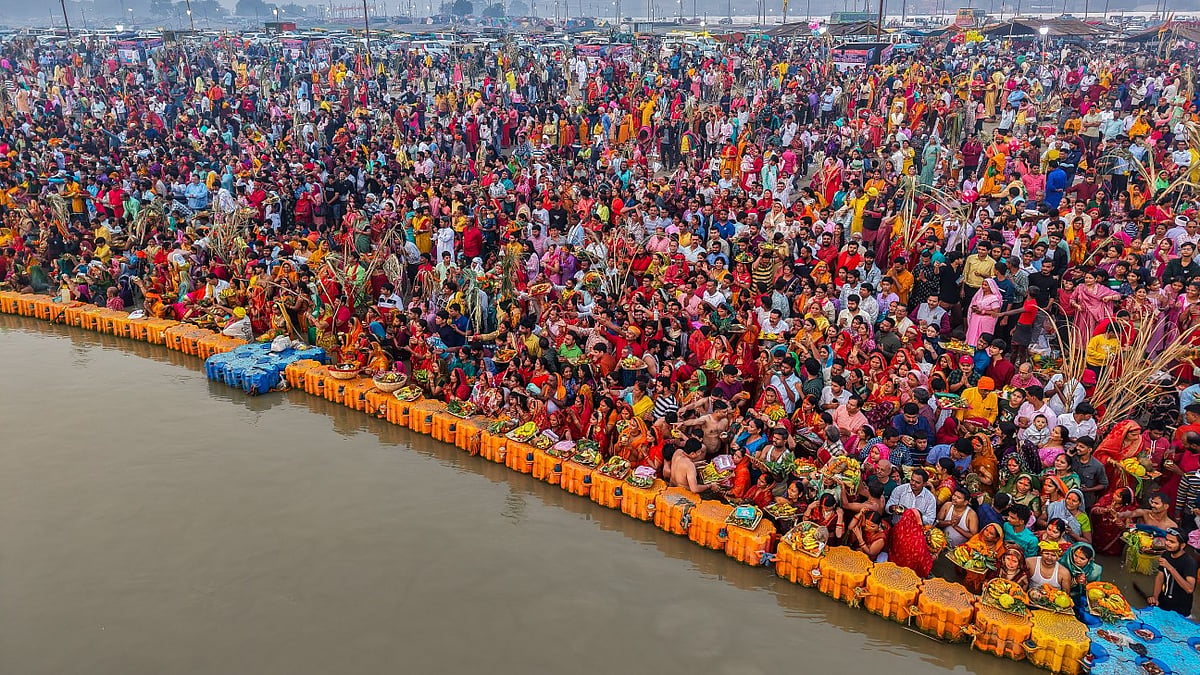Religious gatherings are powerful expressions of faith, unity, and devotion that transcend geographical and cultural boundaries. From the Haj pilgrimage in Mecca to Easter celebrations at the Vatican, these events attract millions. Yet, one event stands out for its scale — the Maha Kumbh, held every 144 years and currently drawing to a close in Prayagraj (Allahabad), India.
Maha Kumbh is not just a festival but a monumental exercise in human coordination. For the sacred dip, millions of devotees, saints, and ascetics converge at the confluence of the Ganga, Yamuna, and the mythical Saraswati rivers, making it the largest religious congregation in the world. While it inspires awe, it also presents enormous logistical challenges, prompting admiration and critique.
The Elusive Dream of a Flawless Kumbh
Large-scale events inevitably attract scrutiny. It is very easy to highlight crowd mismanagement, sanitation issues, traffic snarls, or even allegations of political favouritism. Pointing out flaws often creates an illusion of superiority, but expecting absolute perfection in an event of this magnitude is unrealistic. If infrastructural and logistical struggles mark daily life in India, how can one expect an event of such scale to be flawless?
Yet, Kumbh 2025, led by Uttar Pradesh Chief Minister Yogi Adityanath, aspired to achieve excellence. Planning began years in advance, with substantial investments in infrastructure — dedicated bathing ghats, sanitation, waste disposal mechanisms, drone surveillance, and smart city monitoring systems. While these measures look impressive, they were tested in the real-world chaos of the event itself.
The challenge of perfection lies in the unpredictability of human behaviour. Pilgrims are not always orderly; they fear missing the Mahurat, rushing to be first in line. Religious tourism is not yet an exact science, and unforeseen factors such as weather or crowd surges can disrupt even the best-laid plans. Managing such a massive human tide without minor setbacks is like threading a needle in a hurricane.
You See What You Want to See
Humans are wired to focus on threats, real or perceived. This “negativity bias” dates back to our evolutionary past, where survival depended on recognising dangers. Even today, negative news spreads more rapidly than positive news, gaining more traction on social media. A minor inconvenience — a traffic jam, an overcrowded ghat, or a food stall running out of snacks — can quickly overshadow the larger achievement of managing millions of people.
If you arrive at the Kumbh expecting chaos, you will find it. Every logistical hiccup will confirm your biases if you set out to critique. However, if you step back, you will witness a different story — sadhus from distant akharas, simple farmers walking barefoot for days, and families carrying hope in their hearts. It is a confluence of devotion, endurance, and an unparalleled human spirit.
Despite the logistical challenges, most devotees return home safe, spiritually fulfilled, and awed by the experience. The sheer scale of Kumbh is not just a display of religious fervour but a testament to humanity’s ability to organise, manage, and participate in the event of this magnitude.
Kumbh Deserves Focus, Not Just Criticism
While perfection may be unrealistic, striving for better management is necessary. There’s much to learn and improve, particularly regarding sanitation, water quality, health and safety measures, and crowd control, particularly on key bathing days.
Luxury camps catered to the elite; basic amenities were available to the common pilgrim. Expecting absolute equality at any large event is impractical. However, ensuring dignified conditions for all is achievable. The presence of medical facilities, emergency response teams, and technological advancements such as drone surveillance and real-time monitoring marked significant progress this year.
The government, organisers, and volunteers deserve credit for orchestrating a mammoth event with relatively minor incidents. Past Kumbh Melas have seen tragic stampedes, but Kumbh 2025, despite its complexities, avoided major catastrophes — a remarkable feat in itself.
Kumbh as a Religious and Cultural Phenomenon
Beyond logistics, Kumbh Mela is also a marketing triumph. Corporate brands, religious institutions, and spiritual leaders have seamlessly integrated their presence. The event serves as a powerful cultural and religious touchpoint, uniting people from different walks of life under a shared sense of devotion and purpose.
However, there remains untapped potential in organising Kumbh as a global spiritual and cultural festival. Better crowd regulation, improved facilities, and international outreach could elevate it further. If the Olympics and FIFA World Cup can be benchmarked for planning, why not Kumbh?
Appreciating the Extraordinary
Criticism comes easily, but appreciation requires perspective. The Kumbh is not merely a temporary city — it is a living, breathing phenomenon that brings together millions of unregistered, unregulated, emotionally charged visitors. Managing such an event requires unparalleled dedication, adaptability, and faith, not just among organisers but also among participants.
There will always be complaints: long queues, occasional stampedes, sanitation concerns, but these must be weighed against the magnitude of the achievement. The event showcases human resilience, faith, and an extraordinary level of coordination that deserves recognition.
Final Thoughts: A Shift in Perspective
It is time to adjust our lenses. Instead of focusing on minor inconveniences, let’s acknowledge the miracle of Kumbh, the coming together of millions in faith. Yes, it may not be perfect, but the fact that it was a largely successful execution is an achievement.
Ultimately, what you choose to see is what you will experience. So, choose awe over critique. The Kumbh Mela merits that much.
Sanjeev Kotnala is a brand and marketing consultant, writer, coach and mentor
